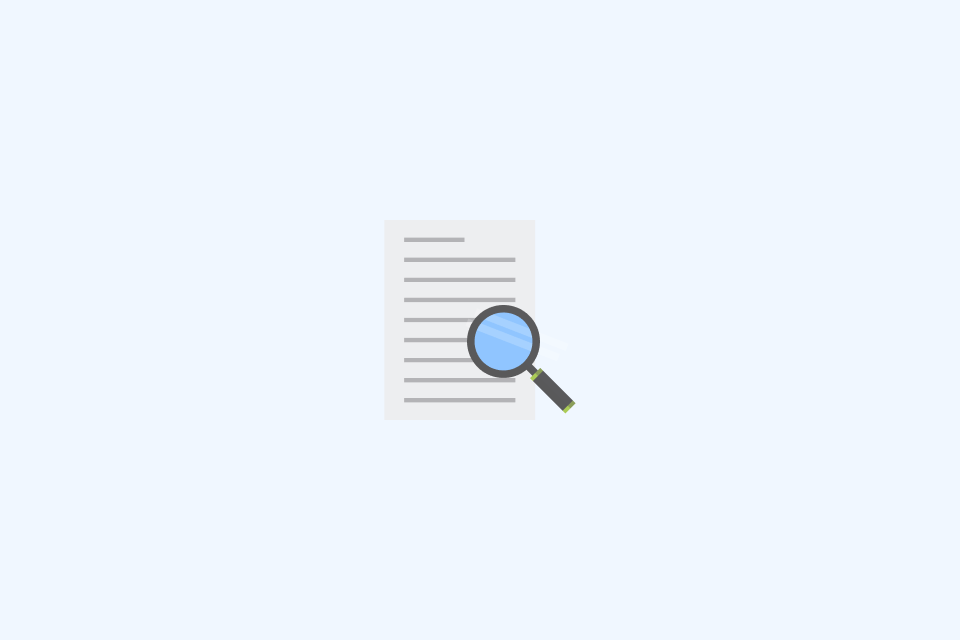Translate Business Emails Professionally in 3 Steps

TABLE OF CONTENTS
Clear, culturally appropriate email is business critical. A misplaced honorific, a mistranslated date, or an altered link can derail deals and delay decisions. Use this three‑step workflow to translate business emails quickly—without losing professionalism or precision.
At a glance:
- Prepare the brief and protect what must not be translated
- Translate with structure: subject, greeting, body, CTA, signature
- Run a quick QA pass for dates, numbers, names, and links
Step 1 — Prepare and Protect
Before you translate, capture the essentials. This reduces rewrites and prevents risky edits.
- Audience and goal: who reads this and what do you want them to do? (inform, confirm, decide, approve)
- Tone: formal, neutral, or friendly? Any honorifics/titles (Dr., Prof., Ms.)?
- Constraints: character limits for subject, legal disclaimers, brand voice rules
- Timing: deadlines and time zones (spell out, e.g., “Oct 20, 2025, 17:00 CET”)
- Attachments/links: confirm correct filenames and final URLs
What not to translate (keep verbatim):
- Product/brand names, model numbers, SKUs, order IDs
- Email addresses, user names, URLs, domain names, file paths
- Variables/placeholders:
{name},%s,$AMOUNT,{{token}}
Helpful references: see What Not to Translate and why formats matter in Why Dates and Numbers Need Localization.
Step 2 — Translate with Structure
Work top‑down. Preserve layout and readability; make actions obvious.
- Subject line
- Keep it concise and action‑oriented (45–60 chars where possible)
- Front‑load keywords (invoice, meeting, approval, deadline)
- Match formality norms per locale; avoid shouting caps
Examples:
- “Meeting confirmation — Tue, Oct 22, 10:00 CET”
- “Invoice 48217 — confirmation required by Oct 31”
- Greeting and naming
- Use culturally appropriate salutations and name order
- Keep titles/honorifics if expected (e.g., “Dear Dr. Sato,”)
- Body copy
- Open with purpose in one sentence (why this email exists)
- Use short paragraphs and bullets for actions/requirements
- Localize dates, times, numbers, and currency formats
- Keep links as is; translate only the surrounding text
- Use plain verbs for CTAs (“Please confirm by…”, “Sign here…”)
- Closing and signature
- Maintain approved signature block and legal lines
- Localize job titles if there is an approved target term
- Include full dialing format for phone (+country code)
Micro‑templates you can reuse:
Approval request
Subject: Approval requested — [Project/PO] by [DATE TIME TZ]
Hello [Name],
Please review and approve [item/PO #] by [DATE TIME TZ].
- Summary: [one line]
- Amount: [currency + format per locale]
- Link: [URL]
Thank you, [Signature]
Schedule confirmation
Subject: Meeting confirmation — [DATE], [TIME] [TZ]
Hello [Name],
This confirms our meeting on [DATE] at [TIME] [TZ]. Agenda:
- [Point 1]
- [Point 2]
If this time no longer works, please suggest two alternatives.
Best regards, [Signature]
Step 3 — QA in 30 Seconds
Run this quick pass before you hit Send:
- Names and titles: spelled correctly; correct honorifics
- Subject: clear, specific, no unnecessary punctuation/caps
- Dates/times: localized format; time zone spelled out once
- Numbers/currency: correct separators (1,234.56 vs 1.234,56), ISO codes/symbols consistent
- Links: correct destination; no staging/test URLs; anchor text matches intent
- Placeholders:
{tokens}untouched; no smart quotes inside code/links - Attachments: mentioned in body and actually attached; filenames correct
- Tone: matches audience; polite closing and signature intact
If the email is high‑stakes (legal, financial, regulatory), add a second reader or a tool pass. For common traps, see The Most Common Translation Mistakes and How to Avoid Them.
Regional Considerations
Different markets have distinct email conventions. Adapt your approach accordingly:
Japan
- Always use honorifics (様 -sama, 先生 -sensei)
- Name order: family name first (Tanaka-san, not San Tanaka)
- Open with seasonal greetings in formal contexts
- Excessive apologies expected (“お忙しいところ恐れ入りますが…”)
- Close with “よろしくお願いいたします” (best regards)
Germany
- Use formal “Sie” unless explicitly invited to use “du”
- Include all academic titles (Dr., Prof. Dr.)
- Precision valued: exact times, detailed specifications
- Direct communication preferred; minimal small talk
- Standard closing: “Mit freundlichen Grüßen”
Arabic-speaking regions
- Right-to-left (RTL) layout: test email rendering
- Use appropriate greetings (السلام عليكم - As-salamu alaykum)
- Avoid scheduling during prayer times or Ramadan
- Family/relationship context often precedes business
- Friday is part of the weekend in most Arab countries
Latin America
- Warmer, more personal tone than North America
- Relationship-building valued over immediate efficiency
- Spanish varies regionally (Spain vs. Mexico vs. Argentina)
- “Usted” vs. “tú” depends on context and country
- Time flexibility: build in buffer for “hora latina”
China
- WeChat often preferred over email for quick exchanges
- Avoid numbers 4 (death) and use 8 (prosperity) when possible
- Hierarchy matters: address senior person first in group emails
- Indirect refusals common (“we will consider” may mean no)
- Simplified vs. Traditional characters: match your audience’s region
Emergency & High-Stakes Scenarios
Urgent Requests (< 24 hours)
- Subject: Start with [URGENT] or [ACTION REQUIRED]
- First line: State deadline explicitly with time zone
- Reduce context: one paragraph maximum before the ask
- Provide multiple contact methods (phone, instant message)
- Confirm receipt: “Please reply to confirm you’ve seen this”
Legal/Regulatory Communications
- Do NOT translate legal terms without counsel review
- Keep original English legal text in parallel
- Add disclaimer: “This translation is for reference only; English version governs”
- Have qualified legal translator review before sending
- Archive both source and translated versions
Financial Notifications
- Double-check all numbers before and after translation
- Use ISO currency codes (USD, EUR, JPY) consistently
- Spell out amounts in words for large sums
- Include payment deadline in multiple formats (date, days remaining)
- Verify wire transfer instructions are untranslated
Crisis Communications
- Speed over perfection: use approved templates
- Single clear action per email
- Avoid idioms and culturally specific references
- Send in recipient’s primary language even if rough
- Follow up with refined version if time permits
Tools & Automation
Recommended Tools
- DeepL: Neural translation for European languages; strong with formal text
- Google Translate: Broad language coverage; best for quick gists
- Grammarly Business: Tone detection and consistency for English editing
- memoQ / SDL Trados: Translation memory (TM) for recurring content
- Smartling / Lokalise: Platform localization for integrated workflows
When to Use Machine Translation
✅ Internal communications (low risk)
✅ First draft for common languages
✅ Repetitive content (invoices, confirmations)
❌ Legal contracts or compliance documents
❌ Marketing/brand-sensitive content
❌ First contact with VIP clients
Building Translation Memory
- Save approved translations of standard phrases
- Tag by: language pair, formality level, industry
- Update quarterly to reflect tone shifts
- Share across team via glossary/TM tool
- Track variants (UK vs. US English, etc.)
Before/After Examples
❌ Poor Translation (English → Spanish for Mexico)
Subject: Important - read now!
Body: Hello,
Please see the attached document and revert back by tomorrow COB.
Thanks, John
Issues:
- “Revert back” is Indianism, not standard English/Spanish
- “COB” undefined (close of business? which time zone?)
- “Tomorrow” ambiguous across time zones
- Too informal for first contact
- No context provided
✅ Good Translation (English → Spanish for Mexico)
Subject: Aprobación requerida - Contrato #2847 - antes del 15 oct, 18:00 CDT
Body: Estimado Sr. García,
Le solicito su aprobación del contrato #2847 antes del 15 de octubre de 2025 a las 18:00 CDT (hora del centro de México).
Resumen:
- Proveedor: Acme Logistics
- Monto: $45,000.00 USD (cuarenta y cinco mil dólares)
- Documento adjunto: Contrato_2847_v3.pdf
Por favor confirme su aprobación respondiendo a este correo.
Quedo atento a sus comentarios.
Saludos cordiales, John Smith Gerente de Adquisiciones
Improvements:
- Specific subject with date, time, time zone
- Formal greeting appropriate for business
- Action and deadline clear in first sentence
- Amount in numbers AND words
- Polite closing in target language style
- Full signature with title
Pro Tips
- Keep a mini glossary for recurring phrases (thanks, nudges, approvals, invoices) to ensure consistent tone.
- Standardize time expressions: prefer “Oct 20, 2025, 17:00 CET” over ambiguous numeric formats.
- Reuse templates: store approved subjects, greetings, and closings for each locale.
- When unsure about formality levels, default to neutral‑polite and shorten after rapport is built.
- Test RTL languages (Arabic, Hebrew) in actual email clients before sending—layout can break.
- For multi-recipient emails, put names in rank order if hierarchy matters in that culture.
- Save “sent” emails by language pair to build your own phrase library over time.
FAQ
Q: Should I translate job titles?
A: Translate only if there’s an approved target term. Otherwise keep the English title and add a localized descriptor in parentheses if clarity is needed.
Q: Do I translate email addresses or links?
A: No. Keep them verbatim. Translate only the surrounding descriptive text.
Q: What about brand/product names?
A: Keep the official brand/product names. Localize generic nouns around them (e.g., “the Acme Analytics platform”).
Q: How do I handle emojis?
A: Use sparingly and only if culturally appropriate. Avoid in formal/legal contexts. Note that meanings vary (👍 is offensive in some Middle Eastern countries). When in doubt, omit.
Q: What if I need to CC multiple people with different seniority levels?
A: In hierarchy-conscious cultures (Japan, Korea, much of Asia), list recipients in descending rank order. In egalitarian cultures, alphabetical is fine. If mixed, default to rank.
Q: Can I use humor or idioms?
A: Avoid unless you’re certain of cultural context. Idioms rarely translate well. Humor can offend or confuse. Keep business emails neutral and clear.
Related reading


